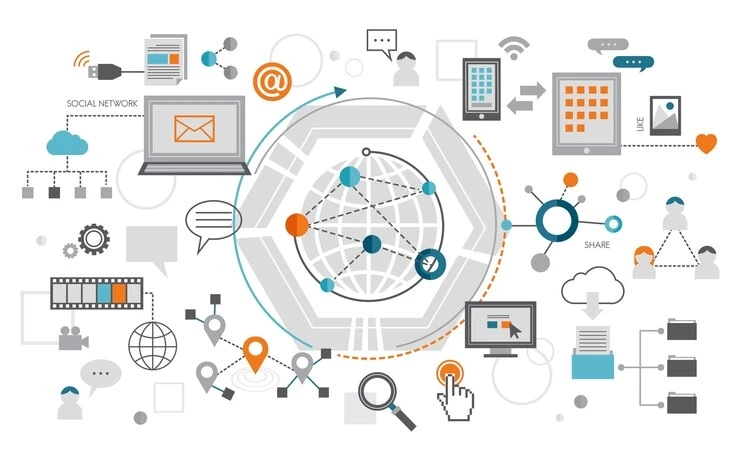In the modern business landscape, companies are increasingly turning to external service providers to meet their software development and IT needs. Among the most popular models are Understanding the Differences Between Outstaffing and Outsourcing. Both strategies aim to enhance operational efficiency and reduce costs, but they differ significantly in execution and benefits. In this article, we will explore the key differences between outstaffing and outsourcing, helping you make an informed decision for your business.
What is Outsourcing?
Outsourcing involves delegating specific business processes or projects to an external company. This third-party provider takes full responsibility for the management and execution of the outsourced tasks. Typically, outsourcing is used for functions such as software development, customer support, marketing, and more.
Benefits of Outsourcing:
Cost Efficiency: Outsourcing can significantly reduce operational costs as companies do not need to invest in infrastructure, training, or recruitment.Access to Expertise: Companies gain access to a pool of skilled professionals with specialized knowledge and experience.Focus on Core Activities: By outsourcing non-core functions, businesses can focus on their primary objectives and strategic goals.Scalability: Outsourcing allows businesses to scale operations up or down quickly based on demand.Challenges of Outsourcing:
Control and Communication: Managing a remote team can pose challenges in communication and control, leading to potential misunderstandings.Quality Assurance: Ensuring the quality of work from an external provider may require additional oversight and coordination.Security Risks: Sharing sensitive information with an external company can raise security and confidentiality concerns.What is Outstaffing?
Outstaffing, on the other hand, involves hiring remote employees who work exclusively for your company but are officially employed by an outstaffing provider. These employees become an integral part of your team, working under your direct supervision and control while the outstaffing provider handles administrative tasks such as payroll, benefits, and HR support.
Benefits of Outstaffing:
Direct Control: Businesses maintain direct control over the remote employees, ensuring alignment with company processes and standards.Cost Savings: Similar to outsourcing, outstaffing reduces costs related to recruitment, infrastructure, and employee benefits.Flexibility: Companies can quickly adjust the size of their team based on project requirements without long-term commitments.Access to Global Talent: Outstaffing allows companies to tap into a global talent pool, finding the best professionals regardless of geographical location.Challenges of Outstaffing:
Integration: Integrating remote employees into the existing team and company culture can be challenging.Management Responsibility: Companies must invest time and resources into managing remote employees effectively.Dependence on Provider: Relying on an outstaffing provider for administrative tasks means businesses must trust the provider’s efficiency and reliability.Outstaffing vs Outsourcing: Key Differences
Control and Management:
Outsourcing: The external provider manages the project and is responsible for delivering the final product. The client has limited control over the daily operations and management of the team.Outstaffing: The client retains full control over the remote employees, managing their tasks and integrating them into the in-house team.Cost Structure:
Outsourcing: Typically involves a fixed cost for the entire project or a monthly fee for ongoing services. Costs can be higher due to the comprehensive nature of the service.Outstaffing: Costs are usually based on the salaries of the remote employees plus a service fee to the outstaffing provider. This model can be more cost-effective for long-term projects.Flexibility:
Outsourcing: Offers flexibility in terms of scaling services up or down, but changes may require renegotiation of contracts and terms.Outstaffing: Provides greater flexibility in scaling the team size quickly without long-term commitments or contract renegotiations.Quality and Expertise:
Outsourcing: Access to a diverse range of skills and expertise from the external provider, but quality control relies heavily on the provider’s management.Outstaffing: Direct control over the quality of work and ability to choose specific professionals with the required skills and expertise.Choosing the Right Model for Your Business
Deciding between outstaffing and outsourcing depends on your business needs, project requirements, and management capabilities. Here are a few considerations to help you make the right choice:
Project Scope and Control: If you need tight control over the project and prefer managing the team directly, outstaffing may be the better option. For tasks that require less oversight, outsourcing can be more efficient.Budget Constraints: Evaluate the cost implications of both models. Outstaffing can be more cost-effective for long-term projects, while outsourcing may be suitable for short-term or one-off projects.Team Integration: Consider how easily remote employees can be integrated into your existing team. Outstaffing requires more effort in team integration but offers greater control.Expertise Requirements: Determine whether you need specialized skills for specific tasks. Outsourcing provides access to a wide range of expertise, while outstaffing allows you to select and manage specific professionals.In conclusion, both outstaffing and outsourcing offer unique advantages and challenges. By understanding the key differences and evaluating your business needs, you can choose the right model to optimize your operations, reduce costs, and achieve your strategic goals.


